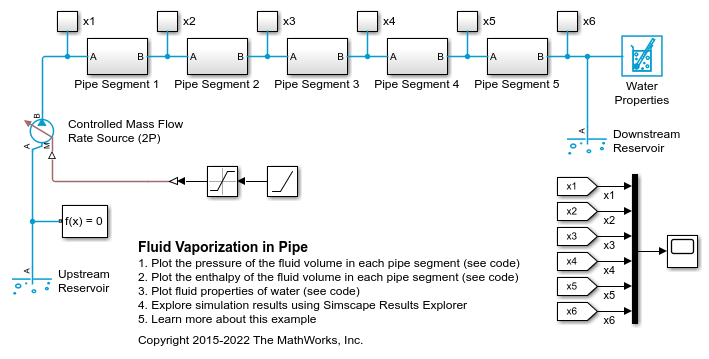Reservoir (2P)
Two-phase fluid reservoir at constant temperature and pressure
Libraries:
Simscape /
Foundation Library /
Two-Phase Fluid /
Elements
Description
The Reservoir (2P) block sets pressure and temperature boundary conditions in a two-phase fluid network. The reservoir is assumed infinite in size, causing its pressure and specific internal energy to remain constant.
Port A represents the reservoir inlet. The flow resistance between port A and the reservoir interior is assumed negligible. The pressure at port A is therefore equal to the pressure inside the reservoir.
The specific enthalpy and specific internal energy at the reservoir inlet depend on the direction of flow. Fluid leaves the reservoir at the reservoir pressure and specific internal energy. Fluid enters the reservoir at the reservoir pressure, but the specific internal energy is determined by the two-phase fluid network upstream.
The block provides independent selection of pressure specification and energy specification, by using the Reservoir pressure specification and Reservoir energy specification parameters. Depending on the selected options, the block exposes additional parameters to specify values for the selected quantities.
This block also serves as a reference connection for the Pressure & Internal Energy Sensor (2P) block. In this case, the measured pressure and specific internal energy are relative to the reservoir pressure and specific internal energy.
Assumptions and Limitations
The pressure and specific internal energy of the fluid are assumed constant in the reservoir.
The flow resistance between port A and the reservoir interior is negligible. Pressure is the same at port A and in the reservoir interior.
Examples
Ports
Conserving
Parameters
Extended Capabilities
Version History
Introduced in R2015b


